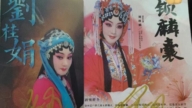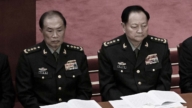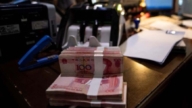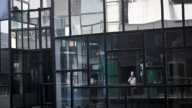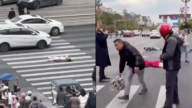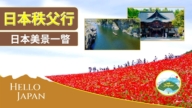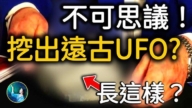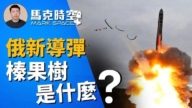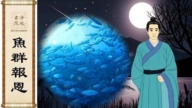【新唐人2012年2月6日訊】去年12月四川社科院向中西部14個省市區發出倡議,聯合對中共紅軍的所謂「長征路線」進行申遺。有學者指出,所謂「長征」,事實上是中共紅軍遭國民政府第五次圍勦失利之後的「逃竄」,但兩年中超過一萬公里的逃竄史,卻被中共黨史學家編寫成了「長征」史。現在中共當局倡議「申遺」,無非是為了宣傳它的政權合法性,而地方官員則利用「申遺」搞政績和撈錢。
四川社科院和中西部14個省市區將共同推進申遺、建立長征文化館等工程。
中共號稱的二萬五千里「長征」,途經江西、四川、重慶和陝西等十五省、市及自治區。
香港《東方日報》認爲,四川的倡議不過是爲了搞政績。報導引述網民的留言說,申遺是政績、建館是形象、扶貧是圈錢,幾全其美的事,難怪其他地方響應。
中國歷史學專家、原「首都師範大學教育科學學院」副教授李元華則指出,所謂「長征」,事實上是中共紅軍遭國民政府第五次圍勦失利之後的「逃竄」,但兩年中超過一萬公里的逃竄史,卻被中共黨史學家編寫成了一段可歌可泣的「長征」史。
中國歷史學專家李元華:「他們(官員)本身不是看重「長征」有多麼偉大,而是想藉此名義來擴大本地區的知名度,或以此為由去開發新的一條旅遊線路,賺取更多的錢。從這個角度來講他們可能都會賣命的去做。」
網絡上,網友們對「長征申遺」嘲諷與罵聲一片。
四川民主人士冉雲飛在微博上說:「這和皇帝逃竄四川說成「幸蜀」一樣,純屬欺罔和意識形態洗腦。」
大陸律師梁剛則說:「逃跑都可以申遺,能進2012年十大笑話。」
大陸自由撰稿人、原河北人民廣播電臺編輯朱欣欣則表示,所謂「長征」路線,並不具備文化遺產的條件。
大陸自由撰稿人朱欣欣:「它(長征)可能在中共它們自己的黨文化歷史中,有很重要的意義或者是一個很重要的事件。但如果放在全世界人類歷史上來考察這件事情,它完全不具備世界文化遺產這種性質和條件。搞這種倡議倡導,無非就是為中共所謂的合法性進行宣傳。」
早在去年,大陸歷史學家高華已經指出:「從1936年開始,中共要求寫紅軍『長征』的回憶,直接起因很現實,就是爭取外國人對紅軍的物質援助。但最後,由回憶錄100多篇結集而成的《紅軍長征記》,卻長期作為『黨內參考資料』禁止流出。」
1954年中宣部將這本書改為《中國工農紅軍第一方面軍長征記》內部發行,但刪除了描寫紅軍吃喝玩樂的文章,因為文章的描述與中共宣傳的紅軍每天冒著槍林彈雨,被迫吃草根、啃樹皮充飢的敍述不符。
李元華表示,中共對「長征」的敘述,是按照它的政治需要而不斷進行歪曲編造,如今倡議申遺,只是執政合法性危機下的需要而已。
新唐人記者劉惠、李明飛、蕭宇採訪報導。
The Long March: Intangible Cultural Heritage or CCP’s Propaganda?
Last December, Sichuan Academy of Social Sciences invited
14 central and western provinces and municipalities
to jointly apply for cultural heritage of the so-called
Red Army Long March route.
Some scholars indicated that the so-called Long March is
in fact the history of the escape route of the
Chinese Communist Red Army after the Fifth defeat by
the Nationalist Government.
This escape covers more than 10,000 km in two years.
The Communist historians made it into history of the Long March.
The application for a cultural heritage is believed to serve
as nothing but promotion of the legitimacy of the CCP,
and a tool for local officials to publicize their performance
while profiting.
Sichuan Academy of Social Sciences and 14 provinces and
municipalities in western China will work together
to promote the World Heritage List and projects
such as the Long March cultural centers.
Known as the Chinese Communists’ 25,000 km, the Long March route
covers 15 provinces, municipalities and autonomous regions such as Jiangxi, Sichuan, Chongqing and Shaanxi.
Hong Kong’s Oriental Daily News believes Sichuan’s initiative
is solely a political performance.
According to the report, netizens believe the heritage application
and construction of cultural centers is a publicity stunt
and the poverty alleviation objective of the project is misappropriating;
but too good for any other local government to turn down.
Chinese history expert, Li Yuanhua, former associate professor
in the School of Education Science, Capital Normal University,
pointed out that the so-called long march is in fact the
Chinese Communist Red Army escape route after being defeated for the Fifth time by the Nationalist Government.
The Communists fled more than 10,000 kilometers in two years.
The Communist Party historians made it into the Long March, a period of epic history.
Chinese historian Li Yuanhua: “They (officials) don’t care
about the importance of the long march,
but use the name for the visibility of the region and
to develop a new tourist route for money making.
From this perspective, they will work for it with their lives."
On the Internet, this heritage project has seen mocking and
condemnation from Web users.
Sichuan democratic activist Ran Yunfei wrote on the microblog,
“This is similar to when the emperor fled to Sichuan but was said to have “visited Sichuan.”
It’s a purely deceiving and brainwashing ideology.
Mainland lawyer Liang Gang said, “If escaping can be classified
as heritage, it should be on the top ten joke list of 2012.
Freelance writer and former Hebei People’s Radio Editor, Zhu
Xinxin, said that the so-called Long March route does not qualify as cultural heritage.
Freelance writer Zhu Xinxin: “It (the Long March) may be a
very important event of significance to the Communists.
Considering this event in the grand scheme of world history,
it does not have the quality or nature of world cultural heritage.
Such an initiative is only to advocate so-called legitimacy for
the Chinese Communists."
As early as last year, historian Gao Hua pointed out that since
1936, the CCP inquired the memoir of the Red Army’s Long March with
a very realistic and direct purpose – to fight for
material assistance to the Red Army from foreigners.
Finally, the memoir with more than 100 articles has long been
recognized as an inner reference and is prohibited from being revealed.
In 1954 this memoir was changed to “Long March of the First
Red Army" by the Central Propaganda Department and used as internal documents.
The articles describing the entertainment of the Red Army
were deleted because they do not match the propaganda
which describes how the Red Army was forced to eat grass and
chew bark to fill their stomachs while braving a hail of bullets.
Li Yuanhua said that the Chinese Communists have distorted
and fabricated the Long March to accommodate its political needs.
The heritage application is to fulfill its desire during
the current crisis regarding its political legitimacy.
NTD reporters Liu Hui, Li Mingfei and Xiao Yu






